Review round-up: affordable guitar modelling amps
Four contenders from Boss, Vox, Blackstar and Marshall duke it out
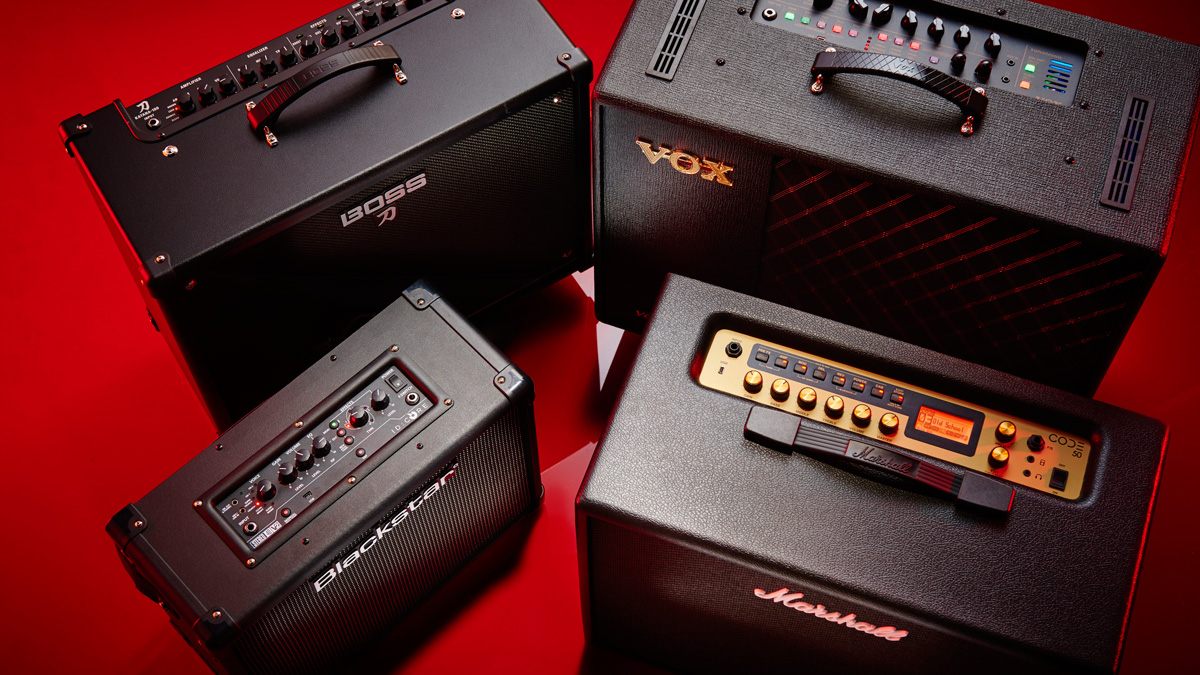
Four contenders fight it out
Okay, we all love vintage valve amps, but let’s be honest, the technology that makes them work is yesterday’s news.
Valves stopped developing in the mid-1950s; and ever since it’s the transistor that’s benefited from continual improvement - with the quantum leap of integrated circuits or chips in 1960 that made today’s computers and mobile phones possible, not to mention digital modelling guitar amps.
Modern modelling designs are bywords for reliability and gig-to-gig consistency, something even the best valve amps struggle to match
Early transistorised amps had a reputation for going up in smoke; however, modern designs are bywords for reliability and gig-to-gig consistency, something even the best valve amps struggle to match. It’s inescapable: valves wear out.
Every time you switch on your valve amp, it will sound imperceptibly flatter and noisier compared with the last time, while a digital modeller will faithfully repeat your killer solo patch night after night.
Early modelling products sounded okay on recordings, but lacked warmth and dynamic range when used live. However, modern chips and vastly improved software have given today’s amps a sonic power-up that narrows the gap to the point where it’s almost irrelevant, at a price that would have been unthinkable 20 years ago.
Here are four affordable combos that not only offer programmable convenience, but mighty tone, too.
Don't Miss

Vox Valvetronix VT100X
What’s a valve doing in a modelling amp?
The VT100X preamp features a real 12AX7 valve for authentic drive and distortion effects, so it’s a hybrid design. That aside, Vox has also leveraged the digital expertise of parent company Korg to create a new and improved digital preamp using VET (Virtual Element Technology) to emulate every component inside a real valve amp.
How many amp models do we get?
There are 11 built-in models, with up to 20 using Vox’s Tone Library app. There’s a choice of 12 different effects, and you can have three running simultaneously. The VT100X also lets you experiment with bias shift and class A or AB settings - very cool. This apart, it’s familiar for anyone used to modelling amps, with typical controls for patch editing and storing.
What other sources can I connect it up to?
Well, the amp’s USB socket means that you can hook the VT100X up to a desktop or mobile device; this allows you to get into greater editing depth with Vox’s excellent Tone Room software app. There’s also an aux in and a phones socket, too.
At a glance
Type: Hybrid valve/digital preamp modelling amplifier .
Key features: 12AX7 preamp valve, 11 amp models and 12 effects, with more from the Tone Library app. USB editing via PC/Mac/iOS/Android.
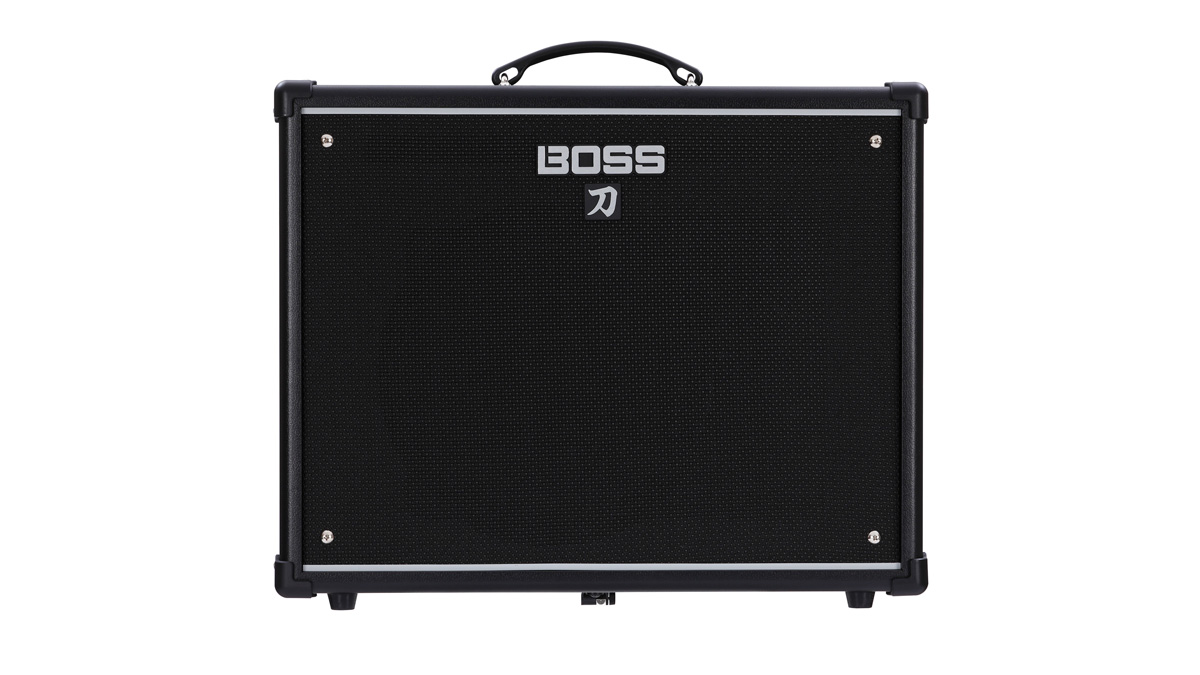
Boss Katana 100
Hang on, doesn’t Boss make effects?
Yes, Boss is an effects legend, but thanks to the digital expertise of parent company Roland, the brand now also has an amp that promises organic, valve-like tones at an impressively low price. It does this by using the same Tube Logic technology employed in last year’s 150-watt Waza Craft head, and other Roland amps.
What sort of sounds to we have to play with?
The K100 doesn’t invite direct comparison with specific amp brands and models. Instead, there are five generic voices: Acoustic, Clean, Crunch, Lead and Brown. You can pre-load 15 different effects types into the amp, with 55 to currently choose from when you link the Katana to the Boss Tone Studio application.
Are its connections equally as varied?
Indeed. The Katana 100 features an effects loop, aux in and line out, speaker-emulated phones/recording out, USB recording and connection to the optional GA-FC foot controller, which can run up to two expression pedals, and toggles the Katana’s effects loop and four user patches.
At a glance
Type: All-digital modelling guitar amplifier
Key features: Five different amp models, 15 on-board effects from a selection of 55, up to three simultaneous. Variable output power control (0.5, 10, 50 and 100 watts), effects loop and USB recording out, built-in tilt stand
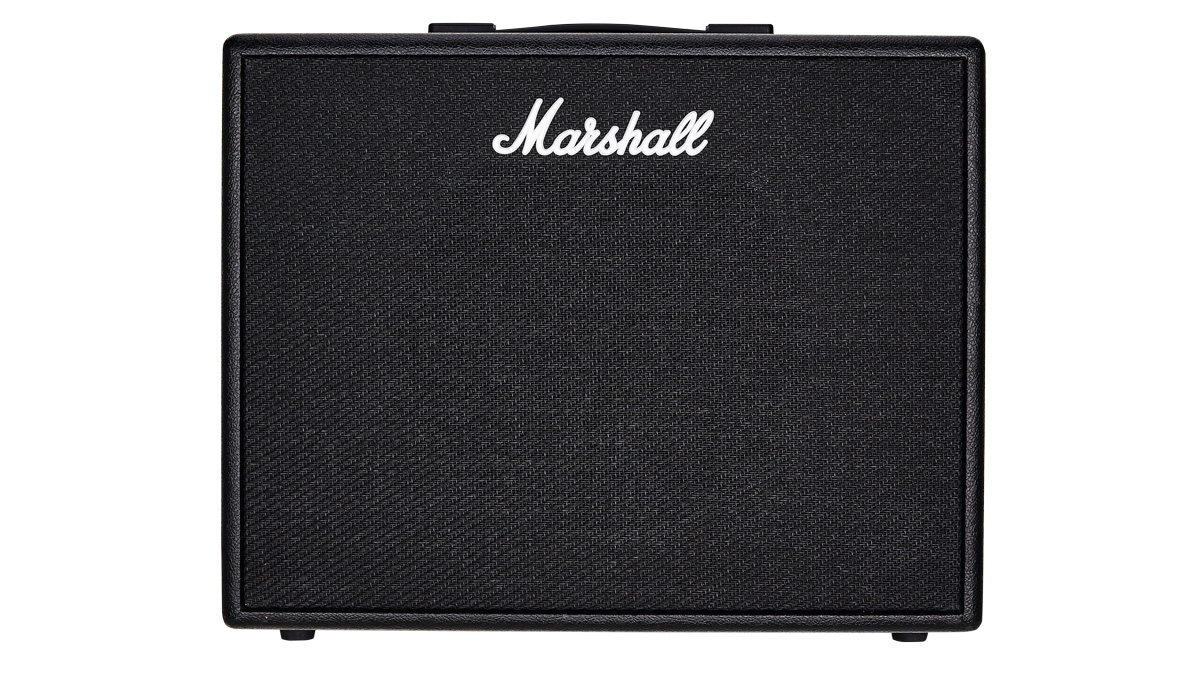
Marshall Code50
Has Marshall cracked the Code?
Very funny. The Code range is Marshall’s first serious attempt at modelling amps and as you’d expect, they pack in loads of Marshall sounds, together with some other classics. They’re all created using Marshall’s state of the art MST (Marshall-Softube Technology) modelling engine, a team-up with digital audio pioneers, Softube.
So how does this differ from other affordable modelling amps?
Well, rather than straight-up amp models, the Code mixes things up by giving you 14 preamp models, four power amp models and eight speaker cab models, which adds a lot of versatility. There are also 24 built-in effects and you can use up to five simultaneously. With 100 on-board presets and more storage available in the superb Gateway app, you’ll never run out of space.
Is that the only hi-tech fun included?
Nope - the Code also has built-in Bluetooth, so you can hook it up to your mobile device, control it in real time and stream music through it. There’s also a headphones out and aux in for analogue types, and again, the Gateway app is great: easily the best in its class.
At a glance
Type: Digital modeling amplifier
Key features: 14 preamp models, 8 speaker cab models, 24 built-in effects, 100 presets, Bluetooth Gateway app connection
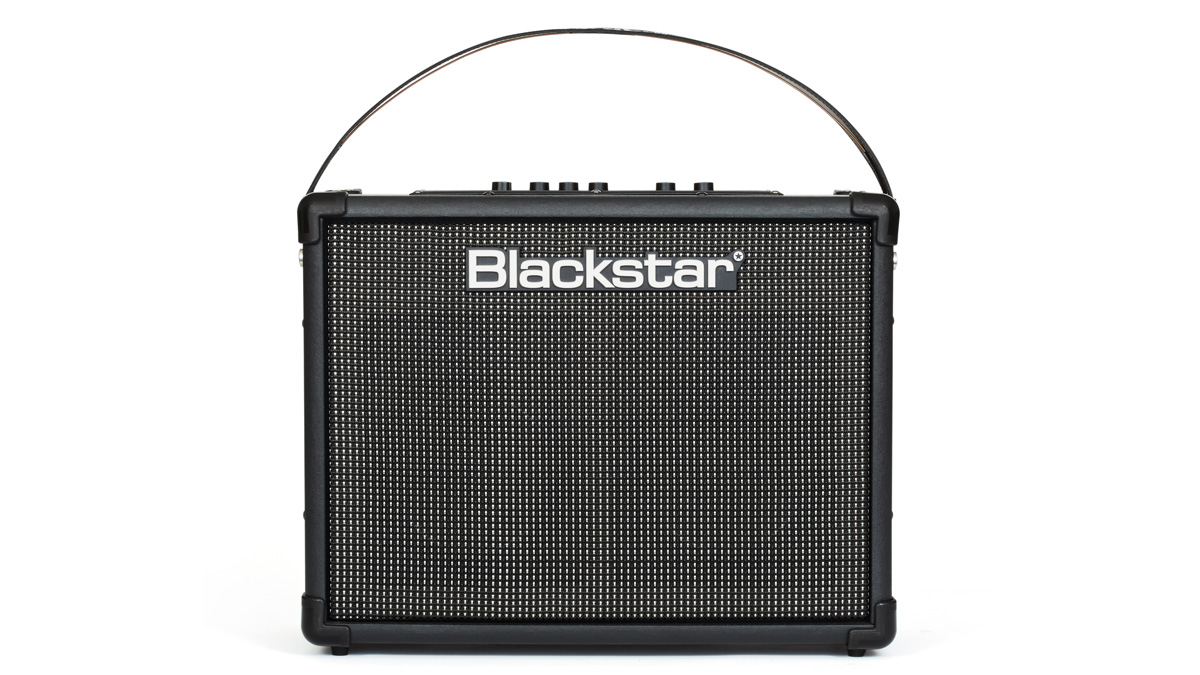
Blackstar ID:Core Stereo 40 V2 Combo
What does the V2 stand for?
The V2 is the latest iteration of Blackstar’s successful ID:Core modelling range. It features newly enhanced amp voices and upgraded effects - including an envelope filter - plus a re-voiced aux in with dynamic EQ for louder, better-sounding playback. It also comes bundled with PreSonus’ Studio One DAW software.
So tell me more about these revamped sounds...
The V2 brings six revitalised amp voices covering the full gamut of tone - from crystalline cleans to massive distortion for blistering leads and huge chord textures. You can also season your tones with 12 upgraded effects, from which you can use three at once, and enjoy it all in Super Wide Stereo.
If it comes with DAW software, it must be recording-friendly?
Bingo. In addition to a guitar input, the ID:Core has a USB outlet that connects to Blackstar’s Insider software and also allows two-way recording - not only can you record, you can also re-amp, sending a dry signal into the ID:Core and returning a fully processed signal to your desktop.
At a glance
Type: Digital modeling amplifier
Key features: 6 voices, 12 effects (3simultaneously),two-wayUSB audio and super-wide stereo speakers. Bundled with PreSonus Studio One
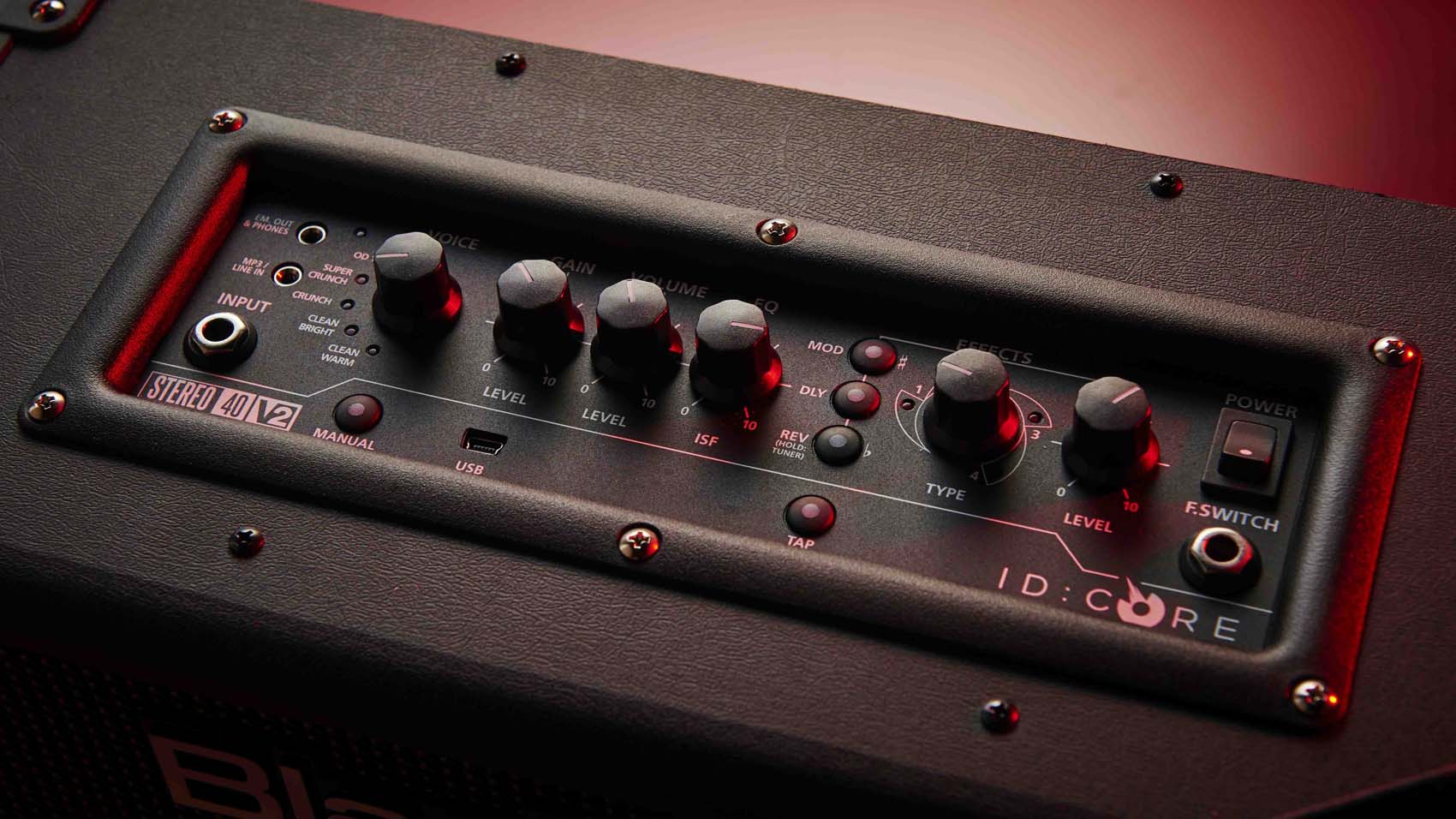
Head to head
All four combos have excellent low-noise performance - it’s worth noting the Blackstar uses an external power supply, while the other three use regular 240V kettle leads - and each also sports an easily navigated control panel.
Vox’s VT100X makes good use of LEDs, including an eerie nuclear blue glow around the 12AX7 preamp valve, which may not help the amp sound better, but looks cool.
Equally cool is Marshall’s Bluetooth connectivity - it hooked up to our iPhone in a few seconds and allows real-time editing of all the amp’s parameters, as well as audio streaming. Comparatively, the Katana is fairly low-key, doing what it’s supposed to with typical Boss efficiency, and it’s a similar story for the Blackstar.
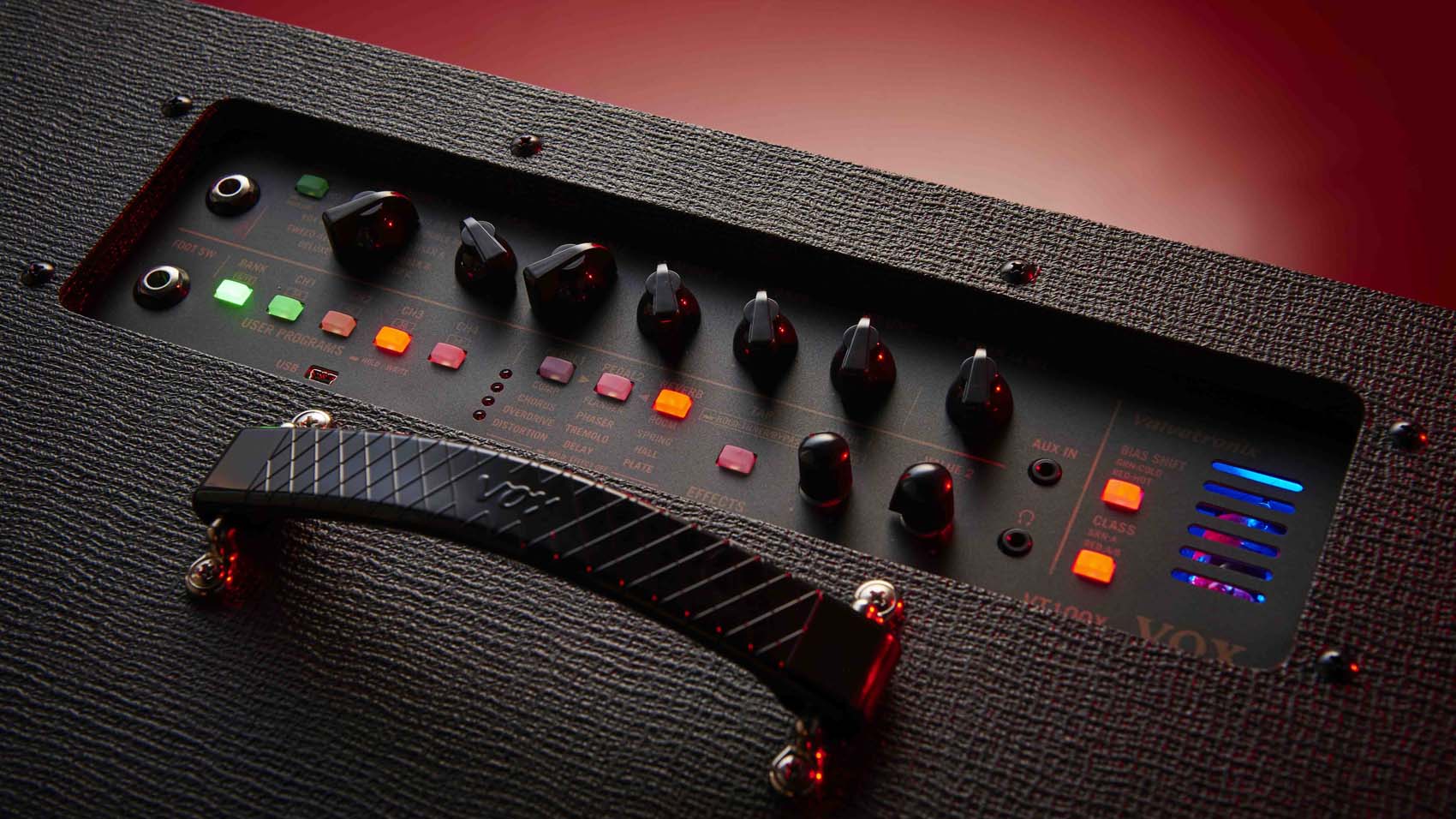
With a real preamp valve, you’d expect the Vox VT100X to sound good, and it really does. Some of the sounds are so inspiring it’s very easy to just get carried away playing - the Dumble-inspired Boutique OD and the warmth of the AC30 are real stand-outs.
The Katana may look plain, but its tones are truly exceptional
Speaking of standing out, the Katana may look plain, but its tones are truly exceptional. The Crunch voice is responsive and dynamic, while the Brown solo sound is as good as many USA valve-powered competitors. Start using the Tone Studio editor and the Katana’s edge becomes sharper still, with different effects chain presets and assignable control parameters.
Marshall’s Code50 is similarly impressive, despite the understandable limitation that most of its best sounds all come from the Marshall back catalogue. Nevertheless, the Gateway app’s ease of editing makes the Code great fun to use.
Blackstar’s re-voiced ID:Core works best where it’s intended to be used, in the home studio/bedroom environment, with new enhanced voices that sound impressively big at conversation volumes and PreSonus’s Studio One software providing a perfect entry to desktop recording.
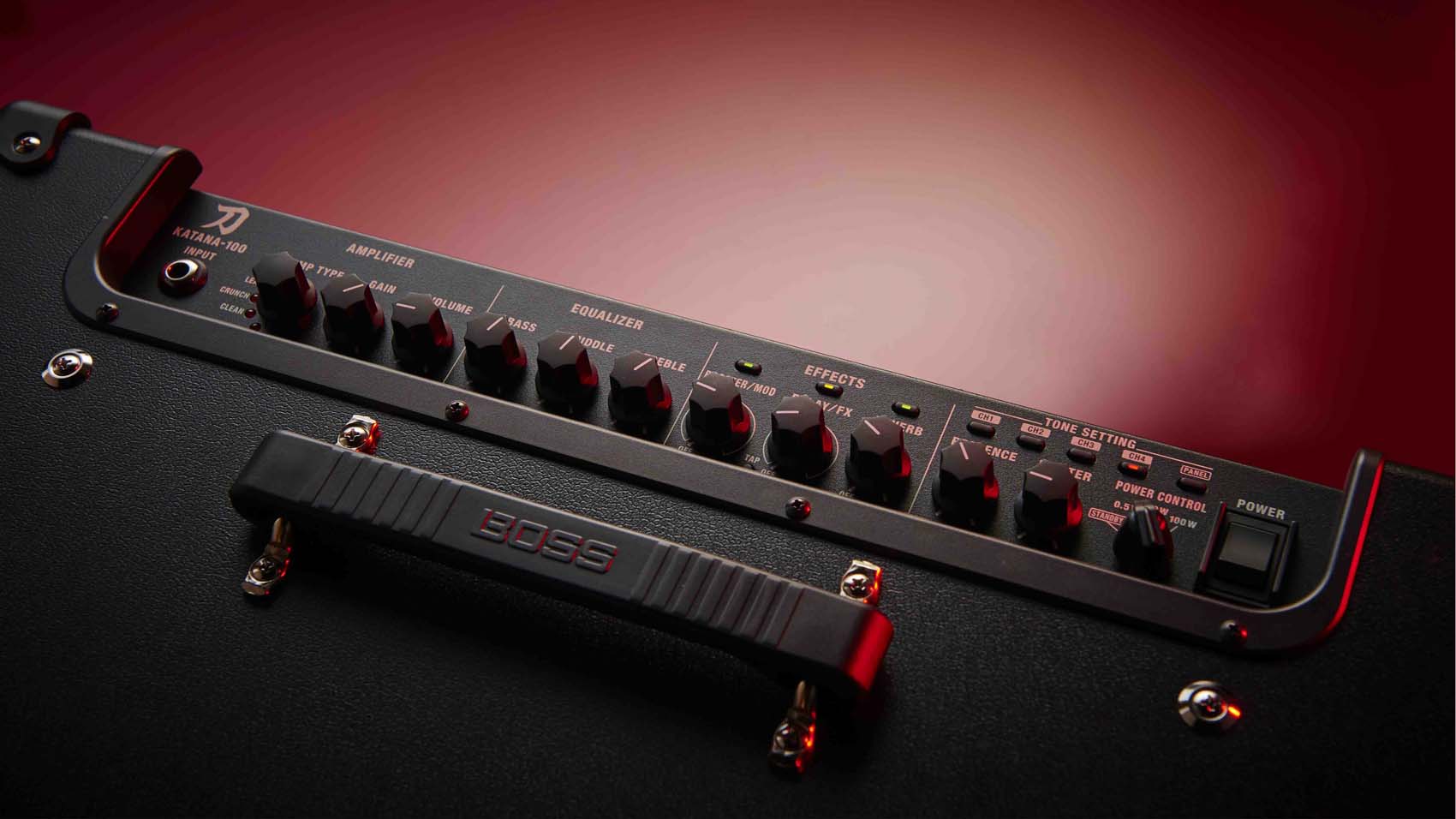
Final verdict
While all four amps are affordable, there’s quite a range of prices here – although it’s worth noting each model comes in a range of sizes to suit your needs.
Blackstar’s ID:Core Stereo 40 is less than half the cost of the Vox, yet for home use it’s quicker to get working, as well as taking up less space. It’s perfect for the home recording enthusiast who wants to get authentic tone onto a track with minimal hassle.
Vox’s VT100X is an ideal weekend warrior’s amp: suited to smaller gigs with 100 watts of punch and authority to get your point across. The sounds are great, but they’re in danger of being eclipsed by Boss’s Katana, which has an organic warmth and dynamic response that some valve amps would find hard to better.
Add the optional GA-FC foot controller and an expression pedal or two, and the Katana transforms from budget modeller to serious performance tool – it’s perfect for the working player who wants reliably consistent great tone on stage and in the studio, with the option to customise your sounds and presets through the Tone Editor app.
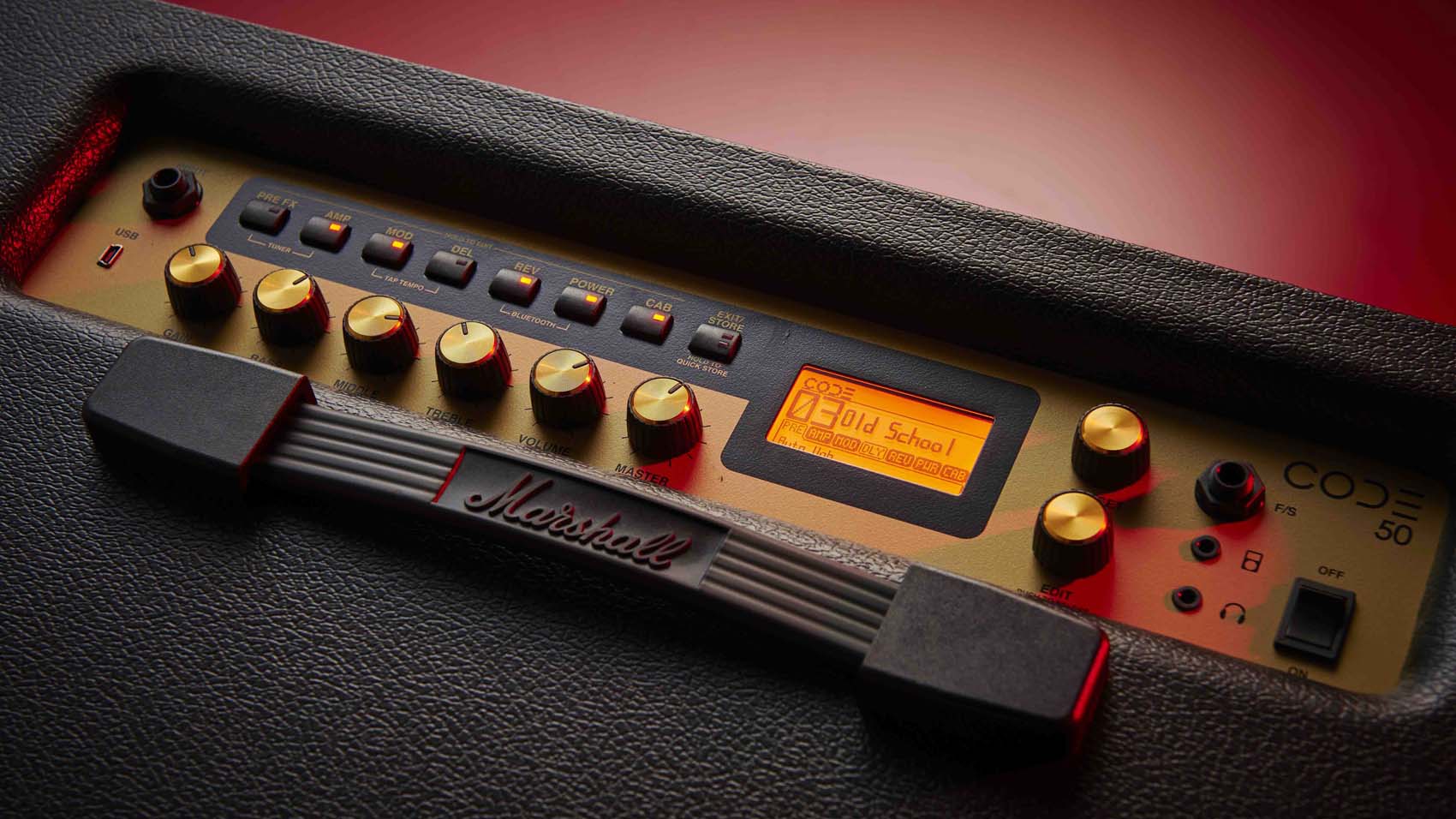
Marshall’s Code50 is almost identical in performance, with ample power to handle smaller gigs, but sonically a little more limiting. However, if you want the Marshall sound combined with modelling amp convenience it’s a no-brainer.
Whichever one you go for, you won’t be disappointed – it’s astonishing how far digital modelling technology has come, particularly in the past 10 years, and equally astonishing how affordable it has become.
Best for live gigs: Vox Valvetronix VT100X
4 out of 5
Best all-rounder: Boss Katana 100
5 out of 5
Best for rock and metal: Marshall Code50
4 out of 5
Best for home and studio: Blackstar ID:Core Stereo 40 V2
4 out of 5

